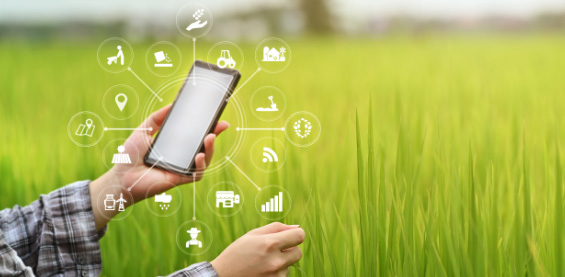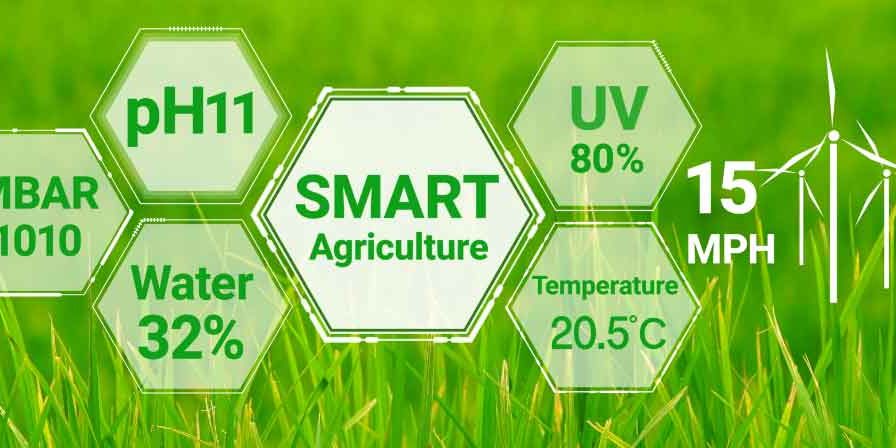Firstly we need to know the problem that our farming industry is going through. Currently, we are developing more food than we require. However, this doesn’t mean that we are secure in the future.
Our population can reach 9.9 billion by 2050. To ensure that we create enough food, we require optimizing our farming production, which is where IoT Technology comes in. The Agricultural Sensors’ market is also expected to reach USD 2.56 Billion by the year 2026 at a CAGR of 11.04%. The sensing technologies are adopted for precision agriculture, offering data that assists farmers monitor and optimize crops.
IoT can also assist farmers in improving deals with thousands of unexpected events such as different weather conditions. It can also help them to know when they are making mistakes and enhance their farming processes. But, how can it be prepared? Let’s explore in-depth:
Benefits Of Smart Farming:
Technologies and IoT can change or convert the agricultural business from various perspectives. Specifically, there are five ways IoT can improve and enhance the agricultural sector:
- Tons of data are collected by smart agriculture sensors, e.g., weather conditions, soil condition, crop growth progress, or cattle’s health. This data can be used to follow your business’ state in general and staff performance, equipment productivity, etc.
- Cost management and waste decrease thanks to the increased control over the stock.
- Boost business productivity through methodological automation. With smart devices, you can automate complicated processes across your production cycle.
- Lower production risks with better control over the internal process. The capability to predict the amount of your production allows you to prepare for better product delivery.
- Improved product quality and volumes and have higher criteria of crop quality and growth capability through automation.
Now that we have described how IoT can be beneficial in agriculture, let’s see how the listed benefits can find their application in real life.
Big Data
When we talk of agro-sensors, it is also about big data. Nowadays, 20% to 30% of food is wasted at numerous stages of the supply chain. Through combating this challenge, AgriTech can save as much as $155–405 billion a year by 2030.
So, what does that suggest for the agriculture sector? This means that we have more knowledge about the different features such as insect infestations, soil quality, area, etc. In a nutshell, the large amount of data will unlock access to a better perception of how things go and help researchers innovate and improve the overall farming industry.
That’s why you will discover several IoT Product Development companies that are now running on several solutions surrounding agriculture.
Precision Farming

Nowadays, the farming industry has to go through a lot of hazards. It can range from not recognizing when the cloudbursts will rise to the loss of information for identifying bad soil situations.
These possibilities are disturbing. Though, IoT can improve how the parameters can be controlled, all thanks to the agro-sensors. The ago-sensors can collect data that are both accurate and real-time. The farmers can make decisions based on the gathered data and reduce the chance connected with it.
For example, Teksun has developed Smart Soil Sensor for Farm & Garden helps the farmers to monitor a farm, garden, and field-related soil data like Soil temperature, Soil pH, Soil Moisture, Soil Fertility, Light Intensity, Atmospheric Humidity & Temperature, etc . and wirelessly transmits the data via a paired Mobile and Web App.
Remote control
Farms are large, and they need many workers to be managed correctly. Though, with the adoption of IoT, there is a potential possibility for the farmers to remotely take charge of their farms.
There are many difficulties such as soil dryness, low water presence, etc. All these issues bring huge damages if not fixed first. With IoT and smart tools, the farmers will know what requires to be done when a query occurs. This kind of technology is called “middleware technology.” Also, the apps that are designed for showing the information are always accessible on the mobile application.
Agricultural Drones
Till now, drones have been used for monitoring, saving people’s lives during emergencies, and so on. Aerial drones can also be used to enhance the farm area. Yes, you read it right. Farm drones open up new possibilities for the farmers to control crops and other essential parameters such as health assessment, planning, etc. Using drones, the farmers can save time and use it to discover new approaches to fight farming problems.
Stuff like soil health and weather forecast can also be observed using farm drones. All of this provides the farmer with an eagle-eye look at their farms. In brief, they are pretty helpful and continue the key to transform the farming industry.
Bottom Line
Machina Research Report states that the number of connected devices in the agricultural industries is predicted to reach 225 million by 2024. Farmers have recognized that the IoT based Smart Farming Solution can be a driving force for improving agricultural production cost-effectively. Till now, there was no alternative for farmers to gather data and work upon it, but with IoT, they will have a focus on their farms.
Teksun has already helped many agritech companies digitize and streamline their operations with technologies. We provide end-to-end services developing IoT solutions across several business domains, from hardware to software development, testing, and integration. To get professional consultation from our experts, get in touch with us.



